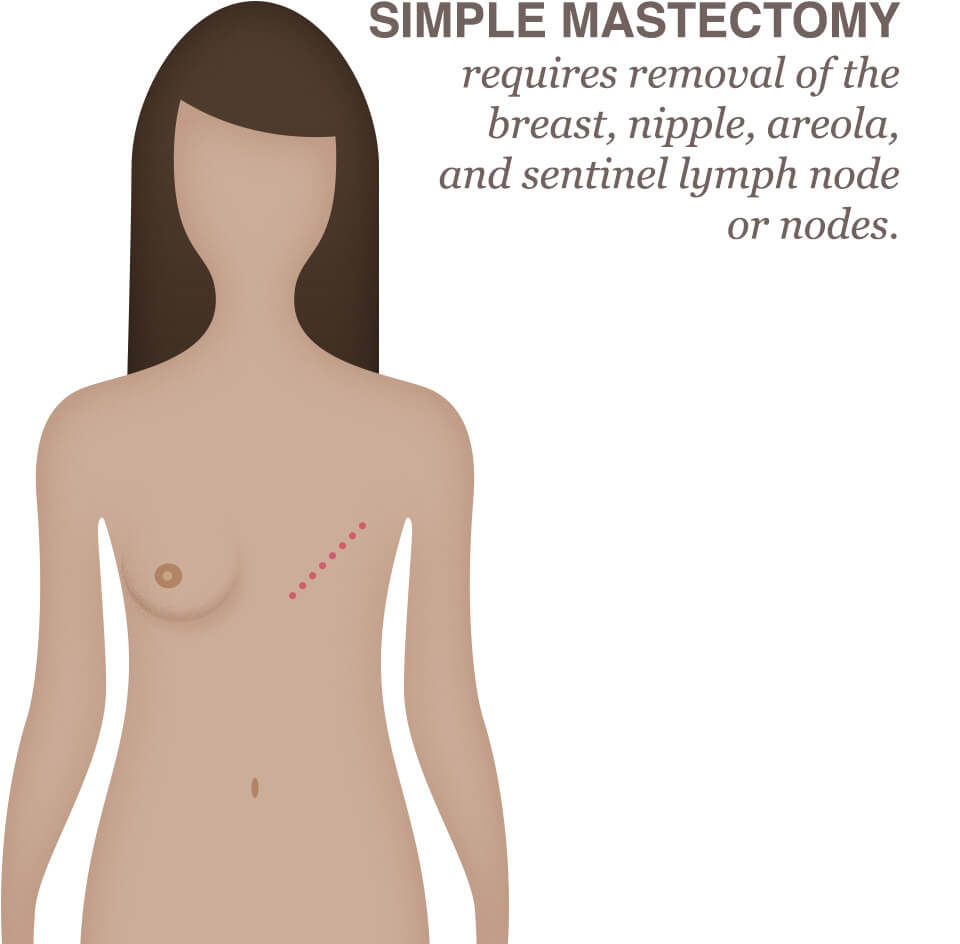In the past, breast cancer surgery often required removing the entire breast, chest wall, and all axillary lymph nodes in a procedure called a radical mastectomy. While radical mastectomies are extremely rare today, there are instances in which surgerymastectomy (removing the entire breast) is the best option to treat the cancer.
Mastectomy is usually indicated if the tumor size is large compared to the size of the breast, the breast is small, the skin or the chest wall muscles are involved, the disease is occupying more than one quadrant of the breast (multicentric), the patient has a genetic mutation that increases her chance of getting a recurrence of the disease or developing a new cancer in the same breast.
There are different types of mastectomy procedures that your surgeon may offer you depending on what is suitable for you:
Nipple- Sparing Mastectomy
This procedure is performed by removing the breast tissue while preserving the skin over the breast, including the nipple and areola. It is always performed with an immediate breast reconstruction to replace the breast tissue removed under the skin envelope.
This is a highly selective procedure and may not fit most of the patients. It requires a small to medium size breast with no ptosis, normal body mass index (BMI), non smoking, non diabetic patients and the nipple and skin to be free of the disease.

Skin-Sparing Mastectomy
This procedure requires removal of the breast, nipple, areola, but not the breast skin.The skin is preserved for the purpose of immediate reconstruction of the breast in the same setting.
The required criteria for this procedure are less strict than for nipple sparing mastectomy; women with mild to moderate breast ptosis, over weight, and with controlled diabetes mellitus can be offered this procedure, and also if the nipple is involved by cancer, this procedure is the better option. Many women who intend to have an immediate breast reconstruction will opt for this procedure.
Simple Mastectomy (also known as total mastectomy)
This surgery requires removal of the breast, nipple, areola, and most of the skin over the breast. This is the best option for patients who are not interested in or are not good candidates for immediate breast reconstruction. For example, if the disease is locally advanced and the chance of local recurrence is high, if the chest wall is involved, if the tumor is resistant to chemotherapy received before surgery, if the patient is not a good candidate for immediate reconstruction due to her weight, comorbidities or breast size/shape. In certain cases, radiation therapy to the cancer area is required after surgery. This is associated with a 50% chance of reconstruction failure, therefore, some patients or surgeon prefer to delay the reconstruction and perform a simple mastectomy in such situations.




